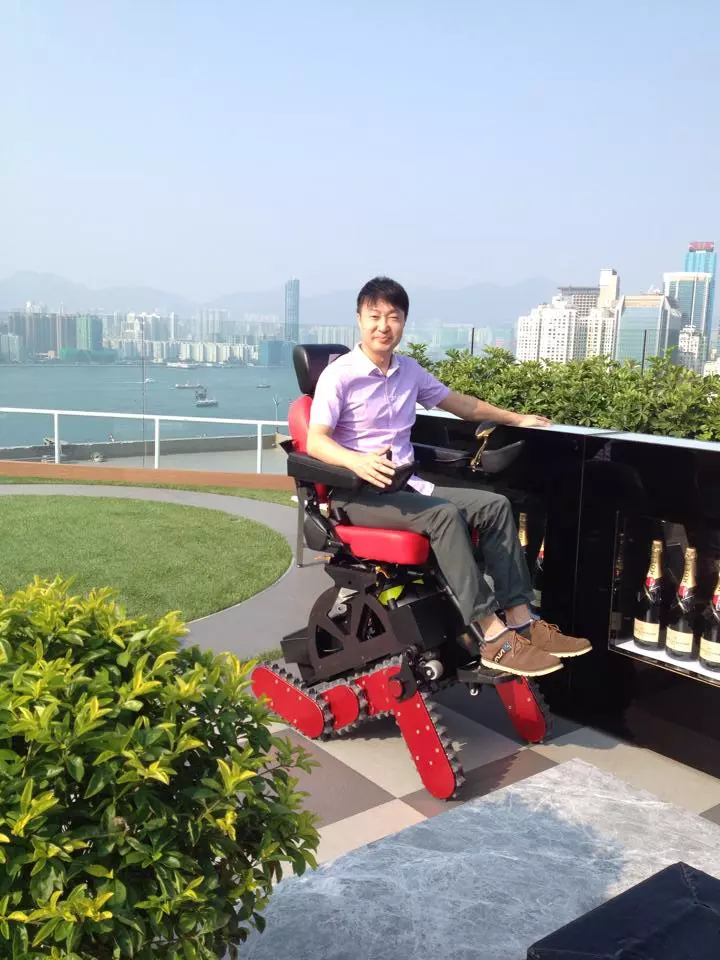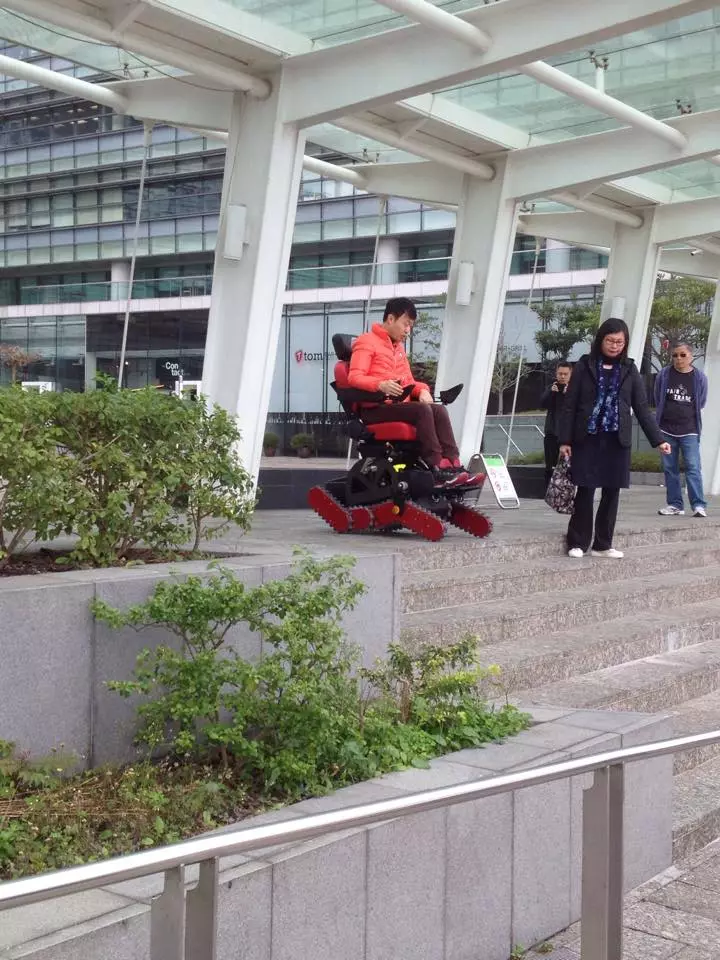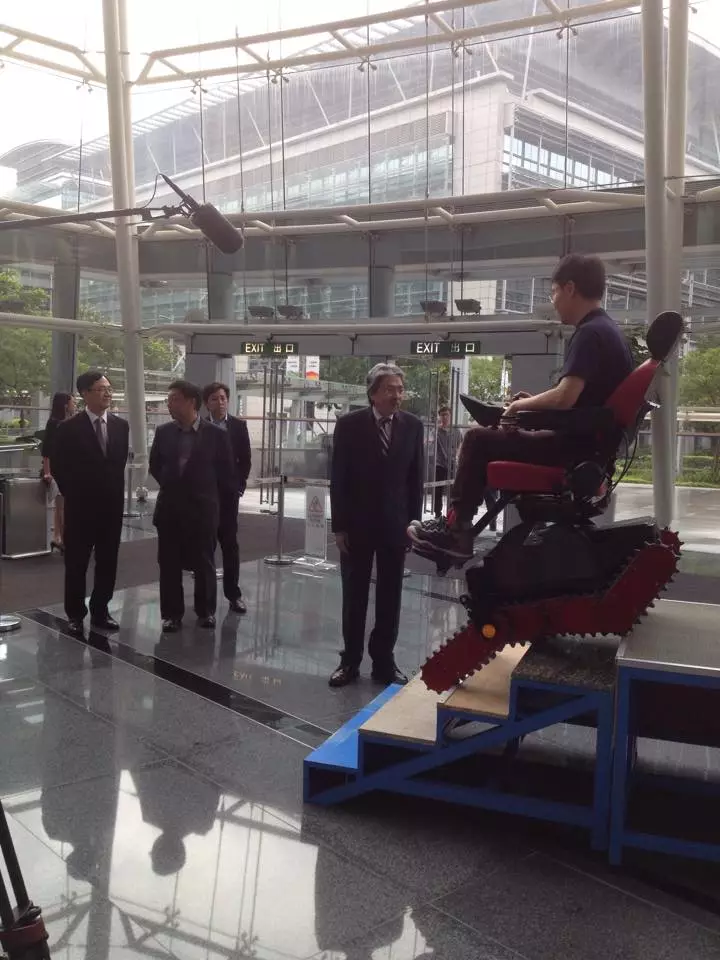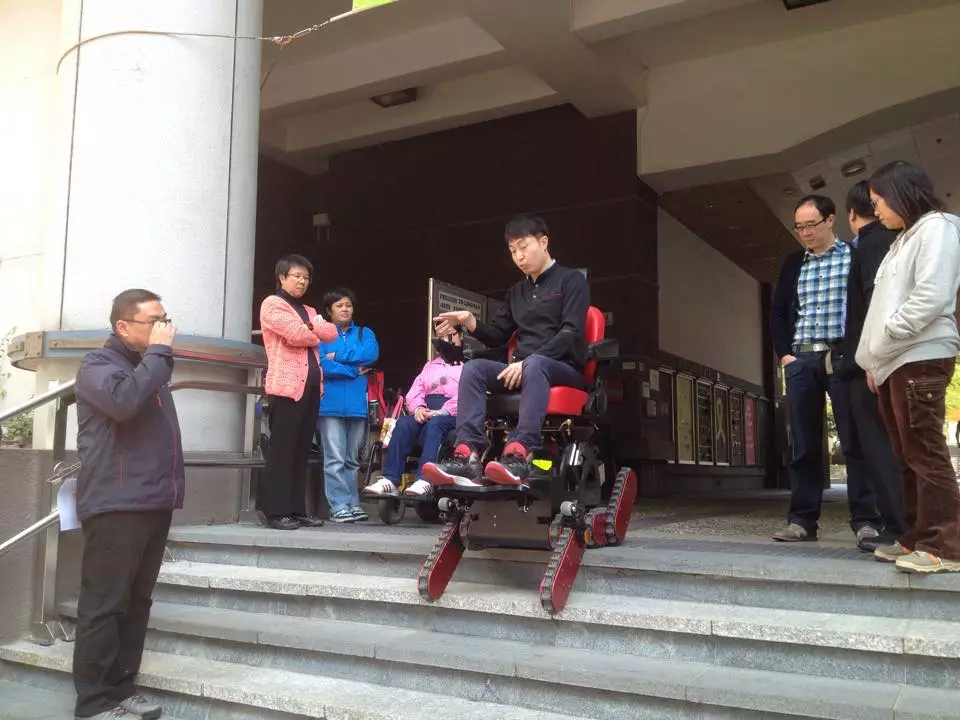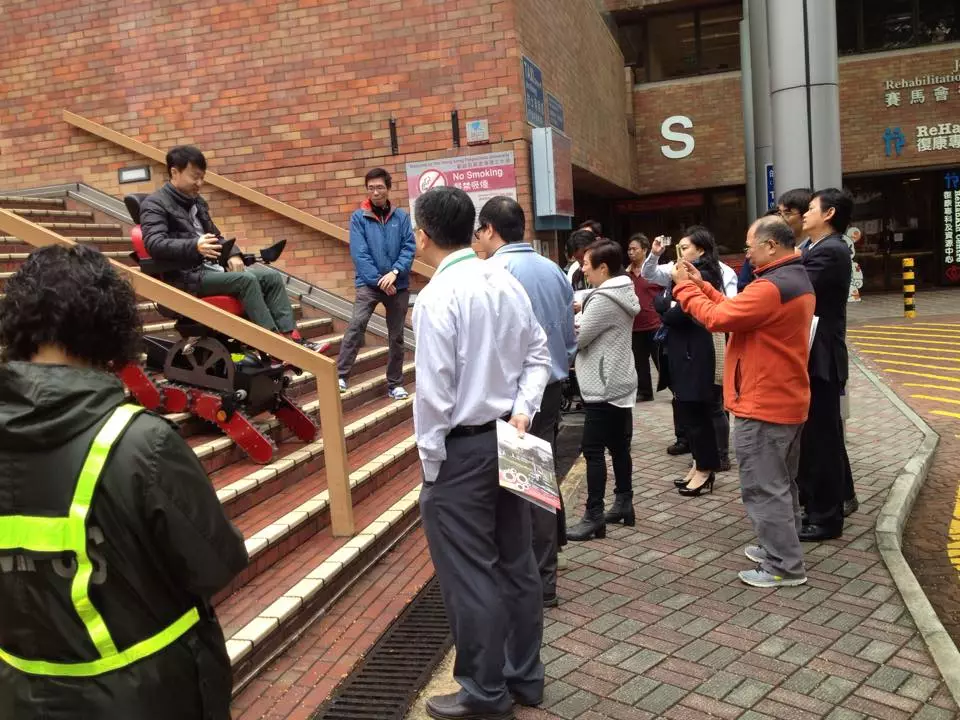We've seen various stair-climbing wheelchairs over the years, including the iBot, the Chiba and, most recently, the Scalevo. All those designs kept the "wheel" in the chair, but a new design from Hong Kong relies on a set of robotic "pedrails" that look almost like skinny tank tracks. These articulated pedrails allow the electric B-Free Chair to grip the staircase firmly as it navigates up or down.
B-Free Chair inventor Alan Lee is a product designer with more than two decades of experience. In 2010, Lee was affected by the story of a Hong Kong-based paraplegic who became a prisoner in his own home due to five steps in the lobby of his building. As the story went, the man essentially locked himself up in his own home for eight years.
Lee looked at what was available and decided that existing stair-negotiating wheelchairs were too large, cumbersome and expensive. He immediately set out to create something lighter, cheaper and more agile, creating a design that received a patent in 2011. The following year, Lee founded B-Free Technology Ltd, and after two years of working with various companies and government bodies, he brought the B-Free Chair to life, holding an official launch in August 2014. Since then, the company has been busy touring various medical and invention shows, working to get the chair to market.
What makes the B-Free design unique from other wheelchairs is the set of articulated treaded legs that B-Free calls pedrails. Each side of the chair has a pair of front and rear pedrails, which move to deliver traction on stairs of various materials, angles and styles.
Lee explains that the design gives the chair a snakelike crawling ability on stairs, simultaneously gripping the stair tread and the riser/tread corner. As you can see from the side angle, the structural panel that the pedrail arms are mounted to is also treaded, providing uninterrupted tread along the entire length.
Using the B-Free Chair on stairs is a slow, meticulous process, but it's certainly an improvement over not being able to negotiate stairs at all. B-Free has demonstrated the chair on straight staircases of different sizes, as well as a spiral staircase. The user faces forward when descending stairs and backward going up them.
While it increases the wheelchair user's freedom immensely, the B-Free Chair can't navigate every set of stairs out there. In addition to staircases that are too narrow or spiral too sharply, the chair isn't designed for staircases with an incline of more than 35 degrees or with steps that rise more than 7.8 in (20 cm) in height.
In addition to the pedrails, the B-Free Chair has small, multidirectional front caster wheels (so it is a "wheel" chair after all) that give it added agility when on flat, smooth ground. The wheels allow the chair to make turns and rotations.
The articulated pedrails can increase the height of the chair, allowing the user a higher vantage point. They also allow the chair to handle other types of everyday obstacles that regular wheels might have trouble with.
The pedrails are powered by a pair of 750-watt electric motors wired up to an 80 Ah lithium-ion battery. Those motors provide speeds up to 3 mph (5 km/h) and a range of up to 17 miles (27.5 km). There's a five-mode controller on one armrest and a speed/direction controller on the other. The 287-lb (130 kg) chair includes an aluminum chassis and a cushioned seat with headrest. It supports users up to 220 lb (100 kg), and the seat includes a gyroscopic mount that keeps the user level, even when the chair is at an incline.
To guard against dangers and accidents, the B-Free Chair includes several safety features. It has a seat belt to keep the user secured. A specially designed safety lock ensures that the pedrail joints don't buckle when the user is on the stairs, which could cause the chair to come crashing down.
B-Free is currently focusing on the Hong Kong and Macau markets and plans to launch the chair in Europe next year. The company tells us that the price is set at HK$128,000 (approx. US$16,500).
B-Free has a number of demonstration videos on its YouTube channel. The first one we've selected below isn't the most polished, but it does a good job of showing the different functions of the chair in a short, succinct clip. The second video is a more in-depth explanation of the design by Alan Lee, including a look at why he went with the multi-piece pedrail system instead of just a single pair of tracked legs, like what's used on the Scalevo. The 10 minutes of English-subtitled film is worth the watch if you're interested in learning more about the nuts and bolts of the invention.
Source: B-Free Technology








